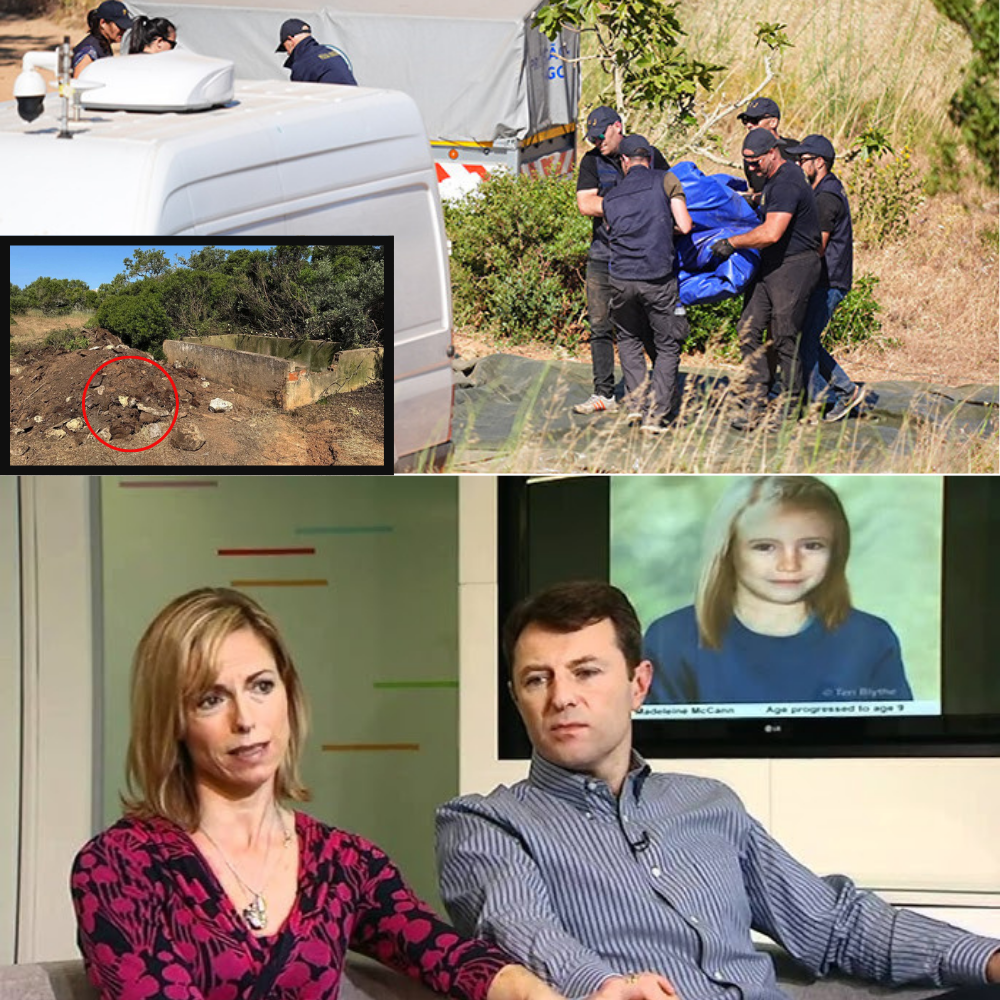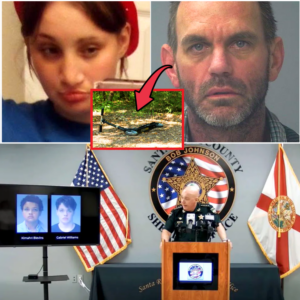
On a quiet stretch of scrubland in Lagos, Portugal, just 30 miles from the picturesque resort town of Praia da Luz, a recent three-day search operation has reignited global interest in one of the most enduring mysteries of the 21st century: the disappearance of Madeleine McCann. In a dramatic turn of events, German and Portuguese investigators unearthed two firearms, fragments of clothing, and bones during an intensive excavation effort. These items, now sent to Germany for forensic analysis, have sparked fresh hope—and new questions—in a case that has gripped the world for nearly two decades. Could these findings finally bring closure to the McCann family, or are they another haunting dead end in a case shrouded in uncertainty? Let’s dive into the details of this latest development and explore why it’s sending shockwaves across the globe.
The Latest Search: A High-Stakes Operation
In early June 2025, a joint task force of German and Portuguese detectives descended on a 120-acre expanse of rugged terrain dotted with derelict buildings, including an abandoned farmhouse. This operation, the first major search since 2023, was driven by a renewed push to uncover evidence against Christian Brueckner, the prime suspect in Madeleine’s disappearance. The search, estimated to have cost £300,000, employed cutting-edge technology such as ground-penetrating radar, alongside heavy machinery like excavators and chainsaws to clear dense vegetation. Over three days, more than 60 officers meticulously combed the area, digging trenches and sifting through debris in a race against time.
The discovery of two buried firearms was a bombshell that caught even seasoned investigators off guard. Alongside the guns, investigators found fragments of clothing and bones, initially believed to be from animals but with smaller fragments requiring closer examination. These items have been carefully packaged and shipped to forensic laboratories in Germany, where experts will analyze them for DNA, chemical traces, or other clues that could tie them to the case. The presence of firearms, in particular, has raised chilling questions about their potential role in Madeleine’s disappearance or other criminal activities linked to the suspect.
The Madeleine McCann Case: A Global Obsession
Madeleine McCann was just three years old when she vanished from her family’s holiday apartment at the Ocean Club resort in Praia da Luz on May 3, 2007. Her parents, Kate and Gerry McCann, had left Madeleine and her twin siblings asleep while they dined with friends at a nearby restaurant, checking on the children periodically. At around 10 p.m., Kate discovered Madeleine was missing, triggering a global manhunt that would become one of the most high-profile missing persons cases in history. Despite extensive searches, private investigations, and millions of pounds spent, no definitive trace of Madeleine has ever been found.
The case has been marked by twists and turns, from early suspicions about the McCanns themselves—later dismissed—to sightings reported across Europe and beyond. In 2020, German authorities named Christian Brueckner, a convicted rapist and pedophile, as their prime suspect, believing he abducted and murdered Madeleine. Brueckner, who lived in the Algarve region between 2000 and 2017, was in Praia da Luz at the time of the disappearance and lived just a mile from the Ocean Club. His criminal history, including a 2005 rape in the same area, and evidence such as a phone call placing him near the resort an hour before Madeleine vanished, have kept him at the center of the investigation.
Christian Brueckner: A Troubling Figure
Christian Brueckner, now 48, is currently serving a seven-year sentence in Germany for the 2005 rape of a 72-year-old American woman in Praia da Luz. His criminal record is extensive, with convictions for sexual offenses against children and burglaries in the Algarve. Investigators have uncovered disturbing items linked to him, including over 70 children’s swimsuits, a toddler’s bicycle, inflatable toys, and a handwritten story about drugging and abducting a woman and child, found at a property he once occupied in Germany. These findings, combined with images and videos placing him near the Barragem do Arade reservoir—another site searched in 2023—paint a chilling picture of a man with a deep obsession with young children.
Brueckner has consistently denied involvement in Madeleine’s disappearance, even taunting authorities in a letter where he claimed “decisive questions” about his involvement—such as DNA evidence or sightings of him at the crime scene—could never be answered. With his potential release from prison looming in September 2025, German prosecutors are under immense pressure to build a case before he walks free. The discovery of the firearms and other items in the latest search could be a critical piece of the puzzle, but their significance remains uncertain.
What the New Discoveries Could Mean
The unearthing of two firearms is a particularly intriguing development. While details about the type or condition of the guns remain undisclosed, their presence in the search area raises several possibilities. Were they used in a crime related to Madeleine’s disappearance? Could they belong to Brueckner or an associate, potentially linking him to the scene? Firearms are rare in such investigations, and their discovery suggests a darker layer to the case that investigators are eager to unravel. Forensic analysis will focus on fingerprints, DNA, and ballistic evidence to determine their origin and any connection to Brueckner or the events of 2007.
The clothing fragments and bones, while less immediately dramatic, are equally significant. Initial reports suggest the bones are likely animal remains, but smaller fragments are being tested to rule out any human connection. The clothing, described as “debris” and possibly adult-sized, will be examined for fibers, stains, or DNA that could link it to Madeleine, Brueckner, or the crime scene. Even if these items are unrelated to the case, their discovery underscores the thoroughness of the search and the investigators’ determination to leave no stone unturned.
The McCanns’ Enduring Hope
Kate and Gerry McCann have lived with unimaginable pain since their daughter’s disappearance. Now in their mid-50s, the couple, both physicians, have dedicated their lives to keeping Madeleine’s case alive through the Find Madeleine Campaign. On the 18th anniversary of her disappearance in May 2025, they issued a poignant statement, noting that Madeleine would be 22 years old and expressing their unwavering resolve to “leave no stone unturned.” They have largely refrained from commenting on the latest search, likely to avoid interfering with the active investigation, but sources close to the family describe the news of the discoveries as both a source of hope and a painful reminder of their loss.
The McCanns have faced relentless scrutiny over the years, from accusations of negligence to baseless theories about their involvement. Yet, they have remained steadfast, supported by a global community that continues to share Madeleine’s story. The latest findings, while far from conclusive, offer a glimmer of possibility that answers may finally be within reach.
Challenges and Skepticism
Despite the excitement surrounding the new discoveries, the investigation faces significant hurdles. Previous searches, such as those at the Barragem do Arade reservoir in 2023 and an allotment in Hanover in 2020, yielded no definitive breakthroughs, leading some to question the efficacy of these costly operations. One officer involved in the latest search reportedly called it a “waste of time,” reflecting the frustration of pursuing leads that often end in dead ends. The lack of official confirmation about the relevance of the guns, bones, and clothing adds to the uncertainty, with investigators cautious about raising false hopes.
Moreover, Brueckner’s impending release poses a ticking clock for prosecutors. Without concrete forensic evidence tying him to Madeleine’s disappearance, charging him remains a challenge. His taunting letter to authorities, in which he highlighted the absence of a body or DNA evidence, underscores the difficulty of building a case based on circumstantial evidence alone. The firearms, if linked to him, could provide a new avenue of investigation, but only if forensic analysis yields actionable results.
A Case That Refuses to Fade
The Madeleine McCann case has captivated the world not only because of its heartbreaking nature but also because it raises profound questions about justice, loss, and the limits of investigation. The discovery of guns, bones, and clothing in the latest search is a stark reminder that, even 18 years later, the case remains active and evolving. For the McCanns, every new development is a double-edged sword—offering hope of closure but also reopening old wounds.
As forensic experts in Germany analyze the newly unearthed items, the world watches with bated breath. Could the firearms unlock a hidden chapter of the case? Will the bones or clothing fragments finally provide the forensic link investigators have sought for decades? Only time will tell, but one thing is certain: the search for Madeleine McCann continues to inspire determination, resilience, and an unyielding quest for truth.


